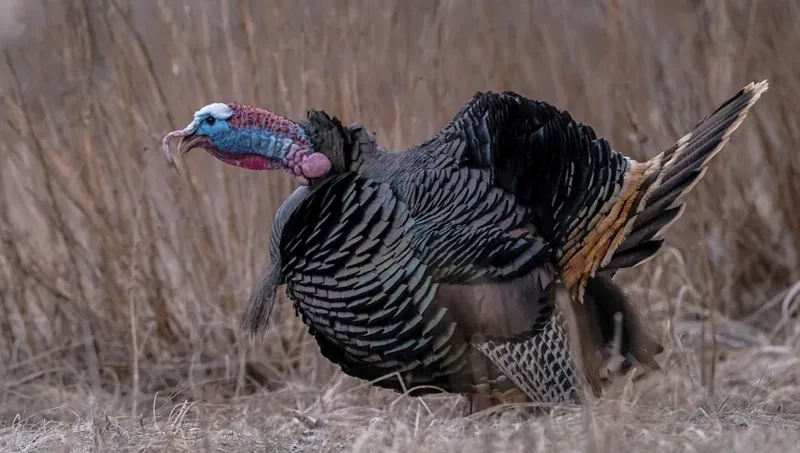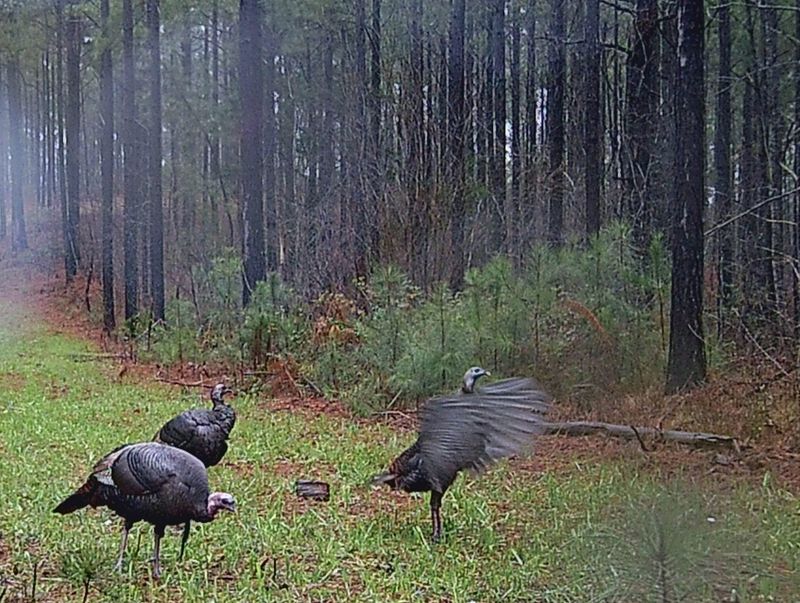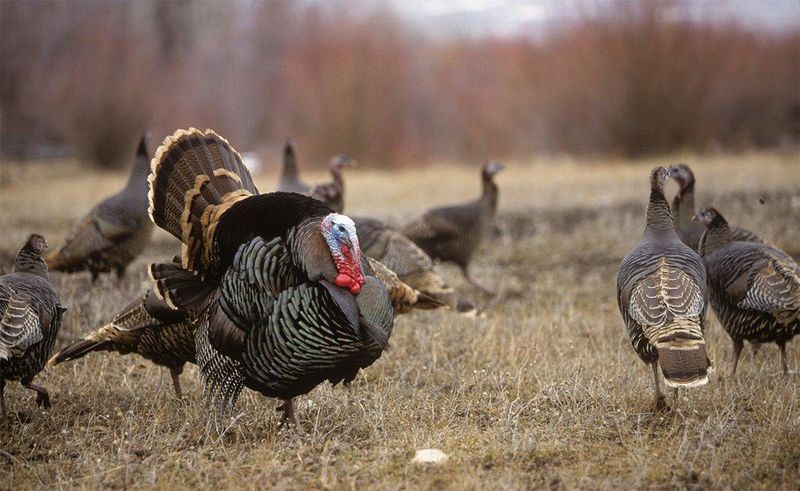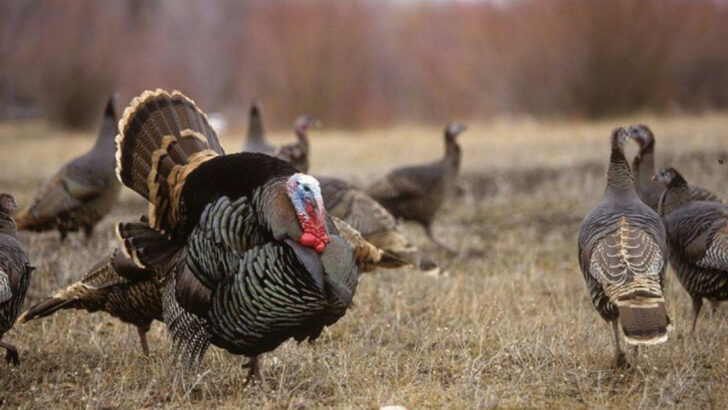Most turkey hunters are playing checkers.
Meanwhile, the gobbler is playing chess.
You think he’s charging in because your call sounds sweet?
Think again. That tom’s been fooled before—he’s cautious, calculating, and about five steps ahead of you.
Spring doesn’t make him stupid.
It makes him selective. Suspicious. Sometimes downright smug.
And that textbook advice about decoys and midday yelps?
He’s heard it all.
Too many hunters head into the woods assuming he’s predictable.
He’s not. He’s moody, he’s observant, and he’s not falling for your plastic hen without a fight.
This is your wake-up call.
It’s time to stop chasing myths
and start understanding what really drives spring gobbler behavior.
Let’s pull back the camo curtain.
The gobbler’s not the fool—he’s been watching you.
Silent Gobblers Aren’t Interested

Many believe a silent gobbler is disinterested, but silence can be strategic. Gobblers may go quiet to assess dangers or gain a better approach. Imagine a stealthy hunter in pursuit, understanding that silence doesn’t equal absence.
These birds might be reacting to environmental cues or competing toms. A hunter’s patience and keen observation can turn a silent encounter into a successful hunt.
Silent gobblers aren’t ignoring calls; they’re often strategizing their next move. Hunters must adapt, using subtle tactics and remaining alert to any sign of presence. Sometimes, the quietest turkeys are the most rewarding.
Gobbler Movement Patterns

Hunters often assume gobblers follow predictable patterns, but these birds are more unpredictable in spring. While food sources guide their movements, gobblers are also influenced by mating pressures.
Observing changes in weather or disturbances can alter their paths suddenly. Adaptive hunters learn to anticipate the unexpected, planning for varied scenarios.
Rather than sticking to old habits, gobblers may explore new territories, driven by instinct or external factors. Recognizing these spontaneous behaviors helps hunters position themselves advantageously, ready for the gobbler’s unpredictable journey.
Timing of Gobbling

The belief that gobbling is only a morning activity is widespread, but these birds can vocalize throughout the day. Gobblers often call in response to environmental stimuli or to assert dominance.
Hunters expecting morning action might miss afternoon opportunities. By understanding that gobbles can occur at any time, hunters stay prepared.
The varied timing of gobbling reflects the dynamic nature of turkey behavior. Embracing this unpredictable aspect keeps hunters engaged and ready for surprises, making each hunting trip a rich experience.
Effect of Weather on Behavior

Weather plays a crucial role in gobbler behavior, yet many hunters overlook its impact. A drizzly day might seem unappealing, but gobblers often remain active in light rain.
Rain can alter their vocal patterns and movements, prompting gobblers to stay low or seek specific cover. Observant hunters turn these conditions to their advantage, finding success amid the raindrops.
Windy days might suppress gobbling, but it doesn’t mean gobblers are inactive. Hunters who adjust tactics to weather shifts often encounter rewarding challenges and unique hunting experiences.
Role of Hen Interaction

Hunters might underestimate the role of hens in gobbler behavior. During spring, gobblers are heavily influenced by hens, often leading to complex social dynamics.
A gobbler’s reaction to hens can vary widely, affecting its response to calls and decoys. By observing hen interactions, hunters gain insights into gobbler motivations.
Ignoring the hen’s influence might lead hunters to miss critical behavioral cues. Understanding these interactions enriches the hunting strategy, helping hunters predict gobbler responses and align their tactics effectively.

